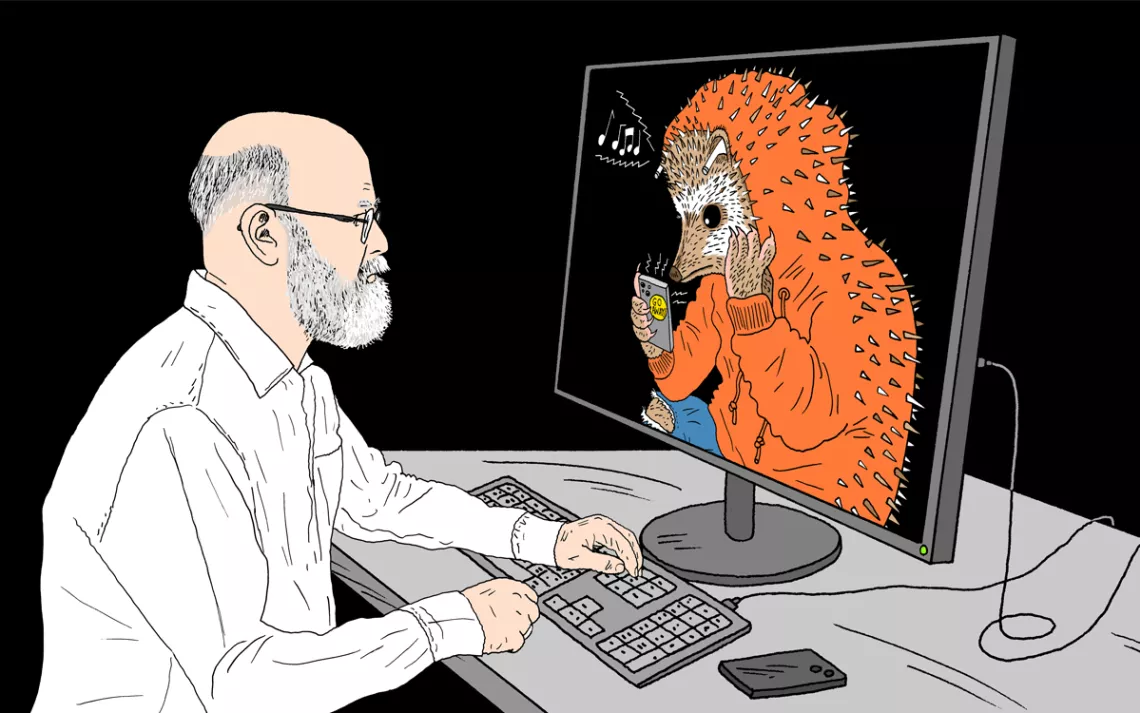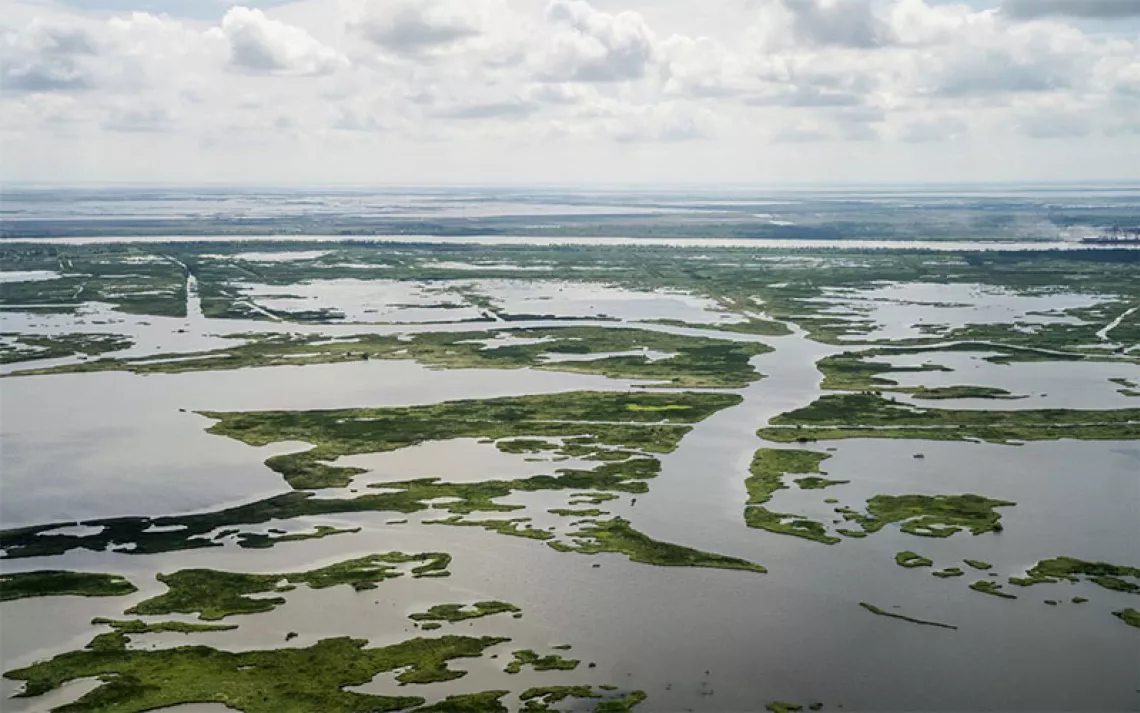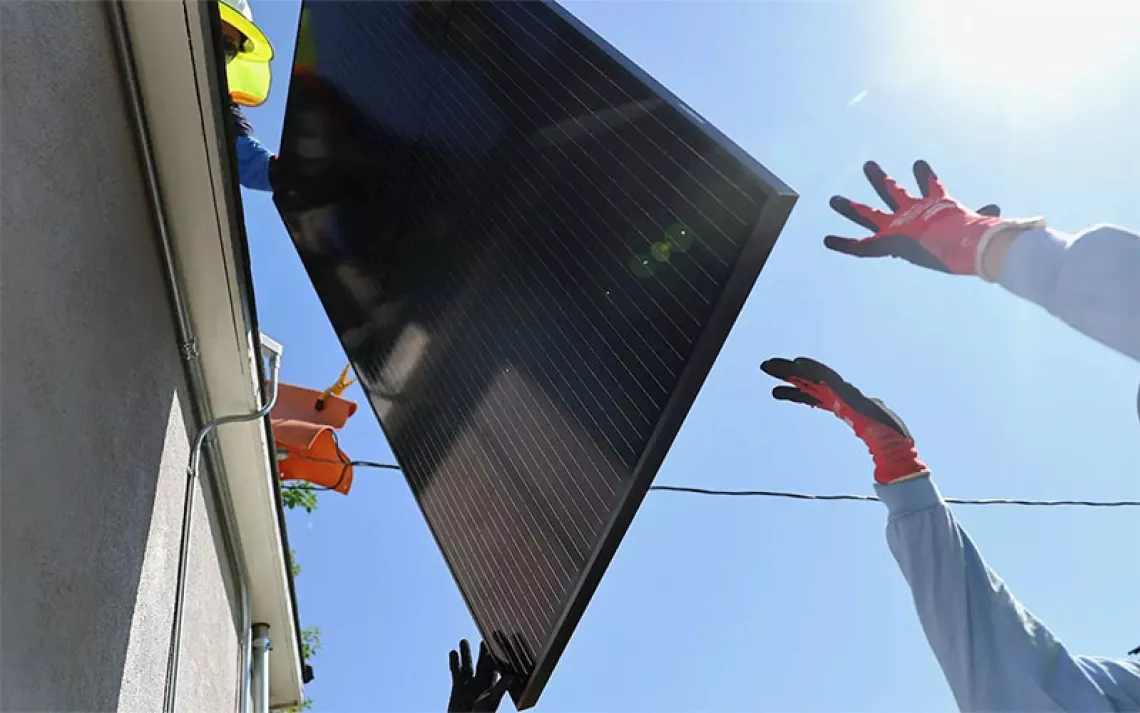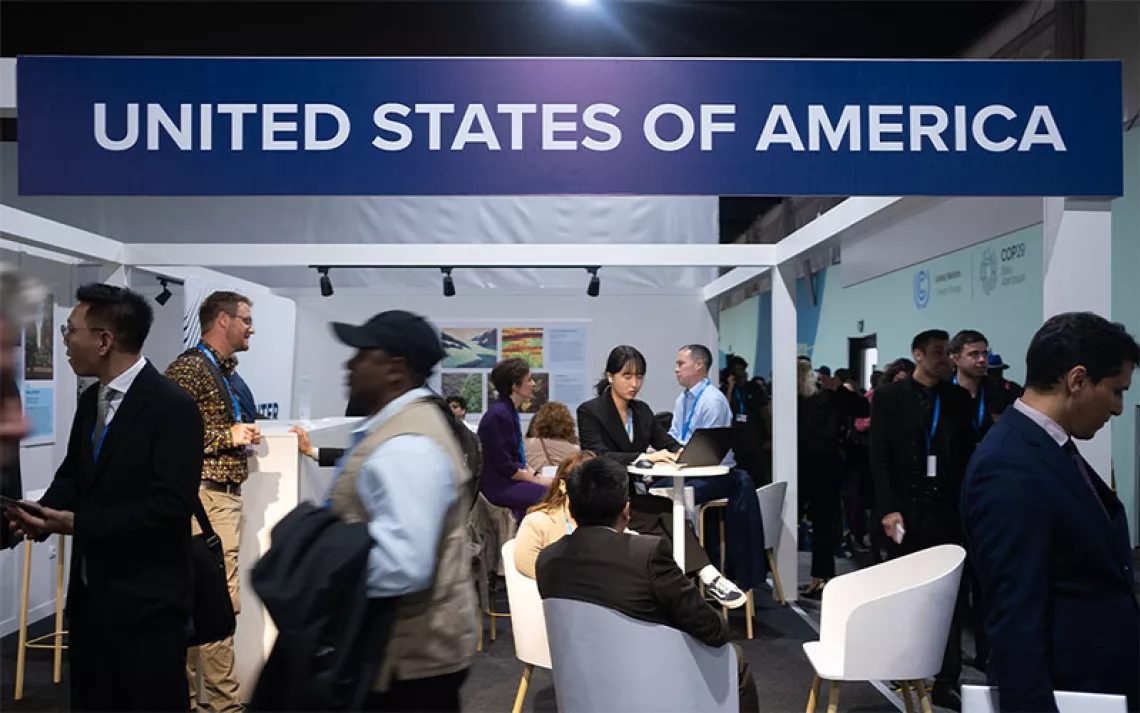Time to Make Some Changes
There is still a lot that individuals can do for the climate

Illustration by Peter Arkle
I was born at 314 ppm, when the percentage of carbon dioxide in the atmosphere was 314 parts per million—not all that far above the preindustrial level of 280 ppm. By the time I started working at Sierra, it was 354—already past the safe limit of 350 ppm. I was married at 364, my first daughter was born at 373, and my second daughter at 380. Today they’re in college, I’m about to retire, and we’re just shy of 422 ppm, the highest carbon dioxide level in at least 3 million years.
Life comes at you fast, they say. When I joined Sierra in 1990, our most pressing concerns were the preservation of old-growth forests in the Pacific Northwest, recycling, and acid rain. Even then, climate concerns were bubbling up. I know because I wrote about them in 1991: “What scientists disagree about is how hot it will get, how fast it will get that way, and whether the evidence warrants drastic measures. The danger, says John Pike of the Federation of American Scientists, is that ‘by the time you have signals so unambiguous that nobody is going to argue with them, you’re in deep, deep doo-doo.’”
Which pretty much brings us up to date, doesn’t it? The unambiguous signals are in the news every day, and the doo-doo is only deepening. But today—thanks in part to the efforts of the Sierra Club and many others—there’s a lot that we can do about it. Hence this special issue of Sierra, a guide to the clean energy transition. We are at the point where it is possible—make that necessary—to end the use of fossil fuels once and for all, as editor in chief Jason Mark writes in his stirring call for a new abolitionism, “Abolish Fossil Fuels.”
Not burning stuff is just a start, though. Part two is transitioning to clean energy. That process is well underway in the power sector—in California, it’s now totally normal for renewable energy to provide 100 percent of the state’s juice for at least part of every day. But as Andrew Leonard reports in “Dark Cloud,” that progress is threatened by AI, cryptocurrency, and our new penchant for putting our entire digital lives in “the cloud.” Spoiler: The solution isn’t deleting our funny cat videos (although how many do we really need?) but in regulating Big Data to make sure it doesn’t drag us backward.
We can’t regulate Google and Amazon on our own, but there is a lot that individuals can do—especially by making changes in our living spaces and how we get around.
The editors have tried to make it fun by gamifying your decision tree in “The Game of Life: Electrified.” Further special sections delve into the details of home electrification and what’s new (and affordable) in electric vehicles. If you’re changing things up, though, why not go all the way and ditch the big steel and plastic hulk altogether and improve your quality of life with an e-bike?
As I transition away from Sierra, I’m looking forward to spending a lot more time on two wheels instead of four. Ditching a planet-killing lifestyle doesn’t have to be burdensome. In fact, it can be a lot more fun. Let’s ride!
 The Magazine of The Sierra Club
The Magazine of The Sierra Club



